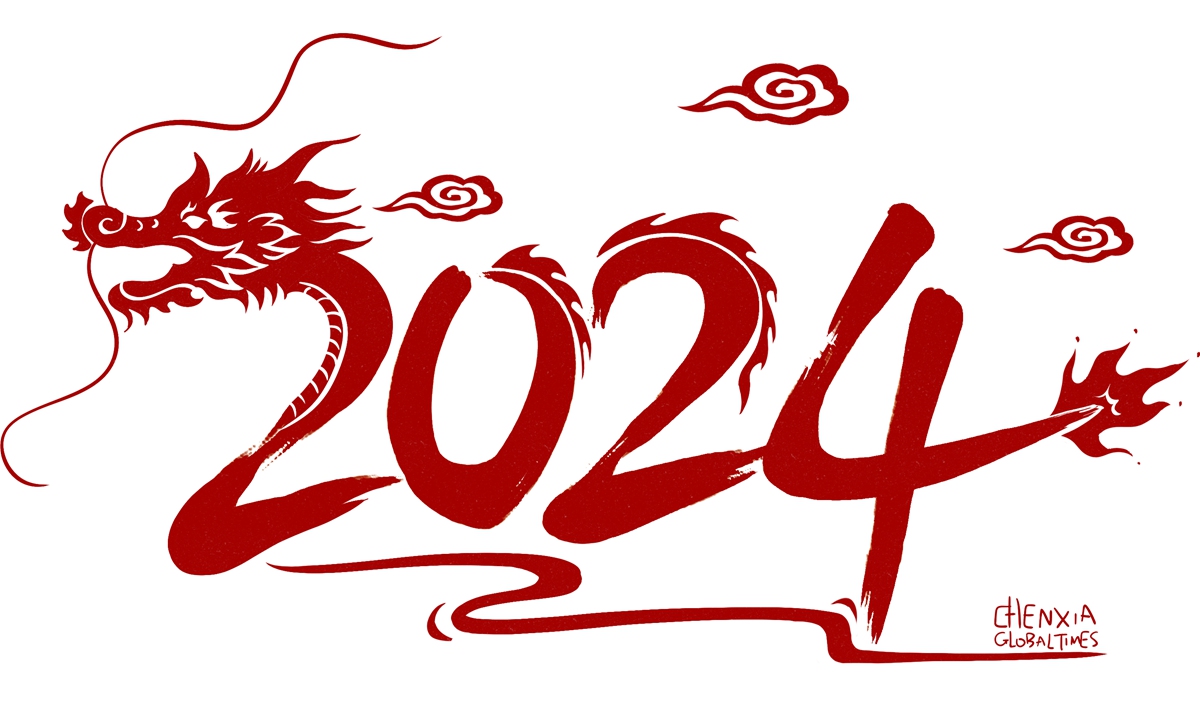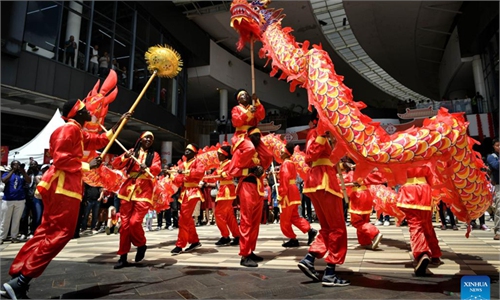
Illustration: Chen Xia/GT
Late last year, the United Nations (UN) officially listed the Lunar New Year, or Spring Festival, as a UN floating holiday in its calendar of conferences and meetings, starting this year. This came as long-awaited good news for many primarily East Asian cultures and societies, which have long celebrated the Lunar New Year as perhaps the most revered holiday of the year.
For Chinese nationals and overseas ethnic Chinese alike, the Spring Festival is first and foremost an auspicious occasion for family reunions. Many family members who might have moved to other parts of the country or even abroad, will typically try their best to rush back to their parents' or elders' homes on the eve of the Lunar New Year, in order to partake in a sumptuous reunion dinner, where family members reminisce about their earlier times together. The rest of the Spring Festival holiday is also often dotted with many rounds of reunions with former classmates and childhood buddies who might have gone their different ways to make their respective livings.
As I understand it, similar themes of reunion and joyfulness are also treasured when celebrating the Lunar New Year in many other East Asian societies. Indeed, for a socioeconomically transforming East Asia, where industrial and commercial vibrancy may bring previously close-knitted family members to different corners, the Lunar New Year is a yearly and timely reminder of the importance of being physically together to foster kinships and friendships.
Building on such positive themes, the Lunar New Year can also be a joyful occasion for forging common ground across a cultural divide. I have the good fortune to have been born and raised in Malaysia, which is blessed with a multiracial and multicultural demographic. In Malaysia, different ethnic groups have their own many colorful festive seasons, but what is perhaps quite unique is the fact that most of these festivals are not celebrated by one particular ethnic group alone. Instead, almost all Malaysians partake in celebrating each other's cultural festivals.
The Lunar New Year is aptly called Chinese New Year in Malaysia, as it was first and foremost celebrated by the ethnic Chinese, but its festive sentiment reverberates among other ethnic groups as well. For example, the Chinese New Year sees plenty of lion dances and dragon dances on the streets, in malls, and at gatherings. The loud drums and cymbals set the adroit pace of the dances that would typically draw big crowds of spectators from other ethnic groups, who will often chase after the lion dance troupes as the latter make their way through big and small alleys to usher in a boisterous Chinese New Year. In my home state of Sabah, where inter-cultural integration is the order of the day, most of the lion dance performers are actually from other ethnic groups. Some of these lion dance troupes are so skillful in their high-leaping performances that they have even won world championships.
And in the Malaysian context, the Chinese New Year is also about "open houses." Having evolved from the olden days where many Malaysians would throw open their family doors to welcome visits by friends and family during festive seasons, these open houses are nowadays typically huge open-door parties organized by both public institutions and the private sector. During Chinese New Year, everyone is welcome to attend the open house parties in Malaysia. There will be many cultural performances to watch, and plenty of festive food and beverages to go around in the open houses.
A typical Chinese New Year communal dish that is popular with both family members and the general public is none other than "lou sang". People from different ethnic backgrounds gather around a large dish with ingredients such as raw fish slices, fruits and vegetables and also other colorful condiments. They dive in with their chopsticks and raise the ingredients high up in the air when mixing them together, symbolizing an up and coming year ahead. And the common celebratory activities go on every year until at least the fifteenth day of Chinese New Year. Some even carry on celebrating until the end of the first month. It is indeed a joyous season in Malaysia.
As I go around the world and witness how the Chinese New Year is celebrated elsewhere, I wish I could do my small part in promoting the integrative spirit of celebrating the festive season together that comes so naturally to most Malaysians. After all, as we interact and integrate more with one another, the world will become smaller and flatter, and peace and prosperity will prevail.
The author is a senior fellow at the Singapore Institute of International Affairs. opinion@globaltimes.com.cn

